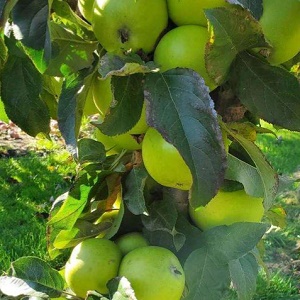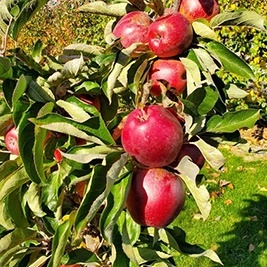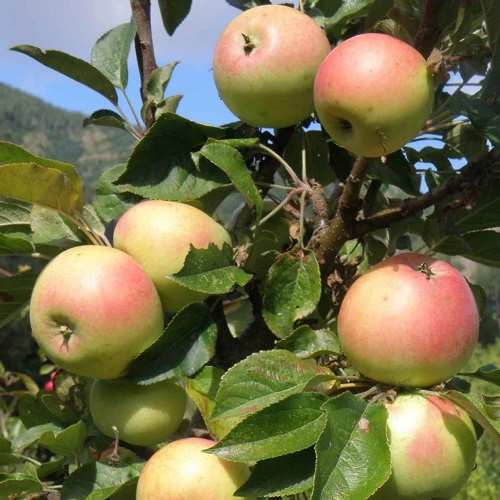Apple Columnar : URBAN TANGY GREEN® Semi-Dwarf (M106)
$55.95
Our columnar lineup gets a fresh infusion of talent with these exciting new European selections. Dr. Jaroslav Tupy of the Czech Republic has developed the Urban Apple® series–a number of scab and mildew resistant varieties ideally suited for the aspiring orchardist with very limited space.
If you enjoy a tangy, refreshing apple, this crisp Granny Smith type should fit the bill. Tangy Green is one of the best for salads as it's firm, cream coloured flesh can be sliced for a long time before turning brown. With it's extra bit of 'zesty zip' it is also ideal for pies and other culinary creations. Tangy Green® is the best columnar keeper, with a storage life of close to six months. In Europe it is sold as 'Goldlane'.
NEEDS A POLLENIZER | ZONE 4 | HARVEST: MID-LATE SEPT.
Only logged in customers who have purchased this product may leave a review.
Growing Tips
Besides selecting the most disease resistant varieties, there are
a few simple things to do to have better apples.
- Fertilize under the outer edges of your trees. There are no feeder roots next to the trunk. A well fed tree stays healthier. (Adequate calcium in the soil also helps so that apples keep longer.)
- Pick up fallen fruit and compost, dispose of, or feed to livestock (where possible).
- Rake up leaves in the fall and compost them away from the orchard.
- Prune trees to encourage light and air to reach the inside of the tree.
- Provide bird nesting sites near your orchard. A variety of orchard companion type plants will attract native pollinator insects and also encourage birds to come and eat insect pests.





Reviews
There are no reviews yet.